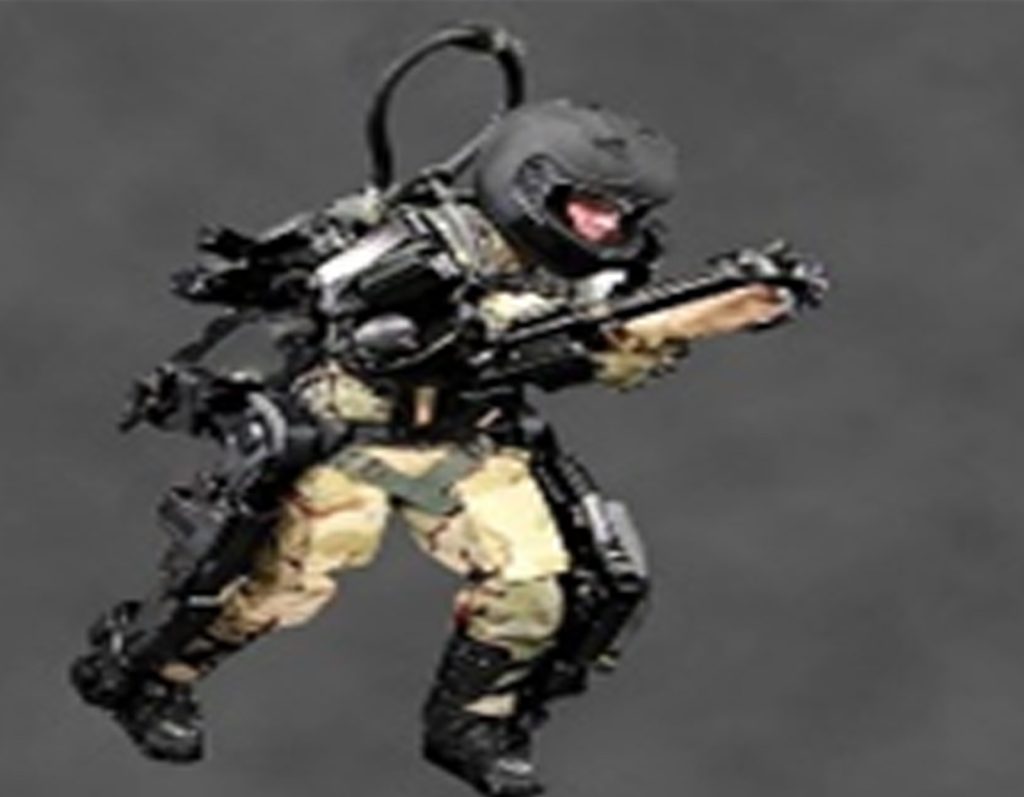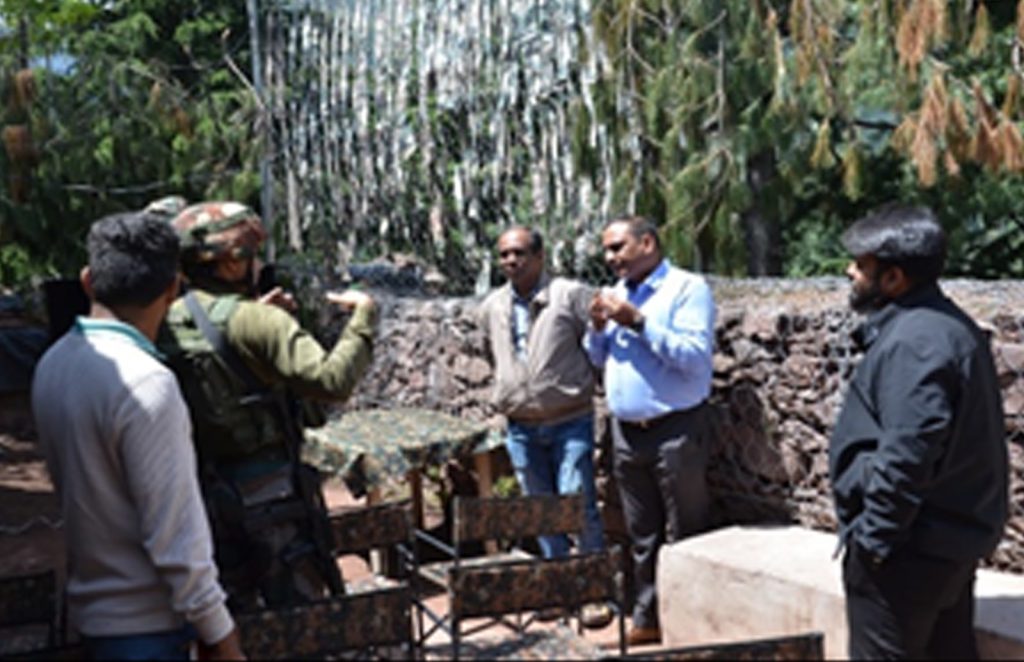By Kamal Shah
The Indian Army is observing 2023 as the ‘Year of Transformation’ and is working on several projects to reshape and re-model the functional processes to bring a quantum jump in its capabilities. The Indian Army is spearheading the realisation of the vision of Atmanirbharta with the intent of boosting manufacturing in India and creating a vibrant defence ecosystem.
The Indian Army has taken giant strides towards modernisation and technology Infusion. Of the five Innovations for Defence Excellence (iDEX) projects contracted in the recent past, four projects worth approximately INR 70 Crores have been by the Army and out of the three Make II projects contracted, two projects worth approximately INR 180 Crores have been contracted by the Army.
68 schemes worth INR 6,600 Crore were signed in the first three tranches of Emergency Procurement. As part of the fourth tranche, 49 schemes worth INR 7,600 Crore have been contracted catering for capabilities ranging from mobility solutions to communication systems, energy solutions, individual protective equipment, drones and counter drones, armament and simulators. 34 schemes worth approximately INR 7000 Crore are under the final stages of procurement. Niche technologies like logistic and nano drones, counter-drones, loitering munitions, unmanned aerial vehicles (UAV) launched precision-guided missiles (PGM), automatic spectrum monitoring systems, etc., are being procured.
Army Design Bureau (ADB)
The present global scenario necessitates a flexible and adaptive approach to tackling challenges of defence and national security. For achieving ‘self-sufficiency through indigenisation’, the ADB drives a proactive outreach and collaborative campaign by connecting the defence industry’s capabilities with the user requirements.
The Indian Army established the ADB in 2016. Since then, ADB has been trailblazing in the quest to indigenise and modernise by connecting the industry, academia, defence public sector undertakings (DPSU) and the Defence Research and Development Organisation’s (DRDO) capabilities.
The aim is to create fully indigenous solutions and establish a decisive edge over the adversary. The ADB is also interacting with various central and state industrial bodies to collaborate and increase its engagement with the industry, micro, small, and medium enterprises (MSME), startups, etc. The successes achieved by the ADB in this short duration are highlighted in the subsequent paragraphs.
Cases Initiated
A large number of cases have been initiated in Make, iDEX, Army Technology Board (ATB) and Technology Development Fund (TDF) categories: –
Make I Projects: The government-funded scheme has been utilised to introduce technologically superior platforms. Six big ticket Make I projects, including light tanks, the Tactical Communication System (TCS), the Future Ready Combat Vehicle (FRCV) and the Terminal End Secrecy Device (TESD), among others, are under progress at various stages.
- Light Tank: It is a game changer as far as our hilly/ mountainous areas are concerned. A one-of-a-kind solution for our emerging challenges will have unique characteristics of being lightweight and being able to engage targets at long range in high altitude areas (HAA).
- TESD: Security is of utmost importance during the prosecution of operations. A single portable device for the end-to-end secure transmission of voice, data and text will enable formation commanders to disseminate classified material.
Make II Projects: It is fully funded by industry, which aims to harness the technology threshold of domestic industry and assists in import substitution. A total of 45 Make II projects worth INR 30,000 Crore have been initiated in a short period of time.
- Maneuverable Expendable Aerial Target (MEAT): The first contract was signed for MEAT in January 2022. The second contract for the Upgraded Assault Track Way (UATW) was signed on 28 February 2023. These include 19 cases initiated based on Suo-Moto proposals.
- The development of Terminally Guided Munition (TGM), Multirole Precision Kill System (MRPKS), Directed Energy Weapon System (DEWS), Armoured Fighting Vehicle (AFV) Protection and Counter Measure System are some of the niche technologies identified for induction through Make II route. A total of 30 projects are either in the prototype development stage or beyond. The projects in advanced stages include the Upper Air Sounding System (UASS), Portable Helipad, Integrated Air Defence Combat Simulator (IADCS), Unit Level Target System and Augmented Reality Head Mounted Display System (ARHMD).
- Upgraded Assault Track Way: It will enable our forces in the desert/semi-desert sector to mobilise faster. It has almost twice the load bearing capacity as compared to the existing system, it is lighter, easier to handle and induces less fatigue amongst troops.
- Portable Helipad: Another innovative solution to our needs is the portable helipad. It can be transported easily to difficult and rugged terrain in HAA, extending the reach of third dimension application, especially in Eastern Ladakh, Central Sector and our Northern Areas.

Upgraded Assault Track Way
Portable Helipad
iDEX: To harness intellectual and innovative capital in the country, the Government of India launched the iDEX programme during DefExpo 2018. Presently, 46 projects of the Indian Army (costing approximately INR 400 Crores, including grants in aid and procurement of prototypes) are progressing as part of the iDEX challenge. More than 45 startups are being supported. Until now, four contracts worth INR 70 Crore for procuring equipment in limited quantities for field exploitation have been signed.

Integrated Mobile Camouflage System
AI-Based Satellite Image Analysis
Remotely Piloted Aerial Vehicle
- Integrated Mobile Camouflage System (IMCS): The IMCS comprises low emissivity and Camouflage Imaging Infrared (CAM – IIR) coatings. The mobile camouflage system materials enable the Armoured Fighting Vehicle (AFV) to merge with the terrain background, significantly enhancing the AFV’s stealth.
- Tactical Local Area Network (LAN) System is a state-of-the-art high bandwidth backhaul wireless radio equipment that provides reliable and failsafe communication. The solution offers enhanced communication ranges and an embedded frequency hopping mechanism to preclude chances of interception.
- Remotely Piloted Aerial Vehicle (RPAV): The RPAV is an armed platform that can stay airborne over a target area for a long time and acquire, track and attack targets at high speeds. It has sensors on board for day and night surveillance.
- Artificial Intelligence (AI) Based Satellite Image Analysis: The AI-based satellite image analysis system is a force multiplier that allows for real-time assessment and interpretation of aerial and satellite images for actionable intelligence.
ATB: ADB is currently steering 17 ATB projects with leading academic institutions of India that deal with developing niche technologies like ramjet projectiles, low-light imaging technology, sensor-fused munitions, lightweight armour, habitats in HAA and various AI-based projects.

Habitat in High Altitude Area
Drones for carriage of Stores in High Altitude Area
Exoskeleton
TDF: The TDF available with DRDO is utilised to innovatively produce niche defence equipment. ADB is steering five projects through this route, which comprise projects like Course Correctable Fuze (CCF), Exoskeleton, and the development of drones for carriage of stores in areas situated in high-altitudes, Mandarin to English translators, ice axe, shovels and boot crampons.
Defence Exports: Visiting foreign military delegations are briefed by the Additional Director General (ADG) ADB on the industry capability and initiatives taken by the Indian Army to create a vibrant defence ecosystem. Industry is given visibility in organising displays during exercises with Friendly Foreign Countries (FFC). In 16 such exercises concluded in the last year, equipment have been displayed by over 110 industries.
Outreach: The successes achieved have been due to the ADB’s extensive outreach, which has mapped over 1,200 industries and contacted over 200 top academic institutions and 50 top research and development (R&D) institutes/organisations in the country. This has resulted in 239 projects amounting to INR 111,000 Crore involving approximately 380 industries. The outreach initiatives are mentioned in succeeding paragraphs.
Establishing Regional Technology Nodes (RTN): To further enhance the ADB footprint and facilitate easier contact for industry/R&D organisations and academia, RTNs have been established in Pune and Bengaluru. RTN Pune is addressing the needs of the States of Maharashtra, Gujarat and Goa, while RTN Bengaluru is catering to Karnataka, Telangana, Tamil Nadu and Kerala’s requirements.
Establishment Of Indian Army Cells At Indian Institutes Of Technologies (IITs): Establishing the Indian Army cell is a unique initiative undertaken to synergise the endeavours of premier institutes’ in-house tech talent and domain expertise. The ADB established an Indian Army Cell at the Indian Institute of Technology (IIT) Delhi in 2021 to undertake collaborative R&D projects with IIT Delhi.
This cell has made a noticeable contribution in the fields of AI, robotics and electric vehicles (EV) and, in the process, has incubated 30 startups. The first startup incubated by IIT Delhi has been awarded the first contract for procurement of AI-based satellite image analytics software successfully developed under the iDEX route.
A pilot project of retrofitting military Gypsies into EVs has also been successfully completed by another startup incubated at IIT Delhi. The establishment of two more Indian Army cells at IIT Kanpur and Indian Institute of Science (IISc) Bengaluru is already underway.
Forward Area Tours: To give a first-hand experience to the developers and entrepreneurs about our challenging operating terrain and weather conditions, forward area tours are being conducted. These have been undertaken at Kupwara, Sikkim, Harsil (Uttarakhand), Nagrota, Dibrugarh, etc., wherein nearly 100 delegates from the industry and academia have benefitted in the last year.
Forward area tour in Eastern and Northern Command
The Compendium Of Problem Definition Statements (CPDS): ADB regularly releases CPDS to enable the industry to provide solutions that address the needs of the field Army. The 2023 edition, comprising 110 problem definition statements in the domains of AI, blockchain, cyber, communication, unmanned aerial systems (UAS) and counter unmanned aerial systems (C-UAS), power management solutions, individual protective equipment, mobility, etc., was released on 15 February 2023 during Aero India 2023. It has gained immense traction and has received close to 400 responses.

The Compendium Of Problem Definition Statements (CPDS
Industry Handholding: The Indian Army has a large inventory of legacy/imported/licensed production equipment, which makes us dependent on the original equipment manufacturers (OEM) for some subcomponents that have not been indigenised as yet.
The ADB organises component displays during flagship events like DefExpo and Aero India to encourage the industry to develop these components indigenously. To encourage and enable the industry to develop technologies needed by the Army, necessary handholding is being done from inception till the development of the product, as alluded to in the following paragraphs.
- Formulation of Preliminary Services Qualitative (PSQR)/Services Qualitative Requirement (SQR): In design and development (D&D) cases, PSQRs are formulated with due consideration to the indigenous Industry’s capability. Post-development of the prototype, the PSQRs are converted to SQRs, drawing a balance between what the Industry has been able to achieve and the armed force’s operational requirements.
- Access To Field Firing Ranges & Equipment: Eight firing ranges were made available to nine development agencies (DAs) for carrying out firing trials for a cumulative duration of 875 days in the last three years. The industry has also been facilitated in releasing ammunition for trials and access to in-service equipment such as BMP-II, tanks (T-90 and T-72), small arms and optronics equipment.
- Internal Development Trials: ADB has also facilitated 11 drone firms’ internal trials in high altitudes in the last three years. This has helped the industries to refine their products and to be better prepared when procurement cases are initiated.
Internal Evaluation Trials
Capability Demonstration: In the last three years, more than 100 niche technology demonstrations engaging 125 industries have been conducted at various operational locations, many of them in forward areas. During the Emergency Procurement process, eleven No Cost No Commitment (NCNC) demonstrations resulted in signing contracts worth nearly INR 1,900 Crore. Major equipments include: –
- Specialist Vehicles: For the first time, indigenised specialist vehicles, Quick Reaction Force (QRF) Vehicle Heavy, QRF Vehicle Medium and Infantry Protected Mobility Vehicles (IPMV) have been procured by the Indian Army, thereby providing enhanced protected mobility in rough terrain and protection from mines and Improvised Explosive Devices (IED).

Quick reaction force vehicle heavy
Infantry-protected mobility vehicle
Counter Remotely Piloted Aerial System (C-RPAS): The first indigenously developed vehicle-based and man-portable C-RPAS systems have been procured under Emergency Procurement to provide soft and hard kill options against evolving drone threats. India is one of the few countries to possess DEW counter-drone capability.
- Logistic Drone & Mini RPAS: The Indian Army has procured logistic drones for HAA to achieve greater flexibility in operational logistics, maintenance of secluded posts and reducing last-mile delays in delivery. We have also acquired Mini RPAS to enhance surveillance capabilities in high altitudes.

- Loitering Munition Systems: Procuring loitering munitions is a significant step to bolster capabilities to launch long-range precision tactical strikes.
- Energy Solutions: To transition from archaic to contemporary technologies, fuel-cell-based generators have been procured, which conserve energy and reduce pollution as well.
- Parallel Modes Of Development: To give adequate opportunities to the defence industry, various projects are progressing through multiple routes. This includes the development of weapon systems/platforms, up-gradation of legacy equipment & introduction of niche technology through Make, iDEX, TDF and ATB routes.
- Spiral Mode Of Development: The Indian Army also encourages spiral development mode. In iDEX cases, equipment being procured in limited quantity would allow for exploitation in the field while enabling simultaneous further development of equipment based on user recommendations & improvements.
The Way Ahead

Robotic mule
Drone kill system
- Capability Development: ADB is taking many transformation initiatives to make the Indian Army a future-ready and agile force. Niche technologies like drones/UAVs, including swarm drones, tactical UAVs for HAA applications, nano drones and long-range observation platforms, counter-drone systems – hybrid, soft and hard kill systems, loitering munitions, quantum communications (QC), electronic-intelligence (ELINT) systems, software-defined radios (SDR), improved habitat in HAA including environment healthy waste disposal, jetpack suits, fast patrol boats, smart/PGMs of different calibres, lightweight armour, unmanned ground vehicles (UGW), robotic mules and augmented reality(AR)/virtual reality (VR) based training aids are going to be inducted in coming two years.
Expanding The Outreach & Engagement With Industry & Academia
- Tech Symposium & Tech Seminars: Technology symposiums are being conducted at Jammu in September 2023 and Guwahati in October 2023. It will give a platform to the defence industry to directly interact with the user on terrain-specific defence equipment requirements. In addition, tech seminars are being organised at Deolali, Secunderabad, Jabalpur, and Ahmednagar to provide an ideal opportunity for MSMEs and entrepreneurs to display their products and interact with the users at their doorstep.
- Import Substitution: Indigenisation of ex-import assemblies/sub-assemblies/components of ‘A’ vehicles are under consideration for initiating projects for TDF and Make III. Nearly 50 such items are of T-90, T-72, and BMPs are under consideration.
With the Army committed to supporting indigenisation, such initiatives will positively encourage the defence ecosystem in the country. The industry has shown remarkable resolve in trying to deliver the goods and surpass expectations. The number of products/technologies inducted/being pursued through multiple approaches indicates the collaborative efforts between the user and the developers, transforming the Indian Army into a technologically superior force to fight future wars with indigenous equipment.









